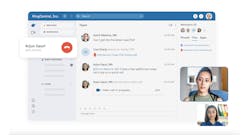Earlier this year, a group of informaticists and other stakeholders led a call to action for health systems and health IT vendors to reduce clinical documentation burden in EHRs to 25 percent of its current level by 2025.
To establish strategies and approaches to reduce documentation burden on U.S. clinicians, the American Medical Informatics Association, the National Library of Medicine (NLM), Columbia University Department of Medical Bioethics, and Vanderbilt Medical University Center sponsored a six-week “25x5” Symposium that involved more than 300 participants from about 140 organizations.
A new report details the Symposium’s themes and recommendations. One key theme is that clinician documentation is for patient care delivery and clinician-patient communication. As noted in the Symposium’s report, “the goal that clinician documentation be foremost to support patient care is often obscured by other factors, including reimbursement and other regulatory requirements imposed on clinicians at the point of care; as well as by usability and design issues.”
Through an analysis of meeting transcripts and the online chat logs, the following recommendations emerged:
• Stakeholders noted that the broadest and most clinically significant advances have been borne out of paring back of requirements during the COVID-19 pandemic. There is much to be learned and to scale nationally based on the crises of 2020-2021, they said.
• Multidisciplinary collaborations across stakeholder classes will be important for unified action to build upon existing and ongoing scientific and data-driven interventions. It will be essential to strike a balance between maintaining quality and complete documentation while capturing the patient’s story, and optimizing interaction, usability and workflow for the clinicians entering the data, the report concludes.
• Helpful aspects of the EHR, such as improved access to clinical data and reduced duplication of effort across team members, should be the focus of the health record, according to stakeholders. Health records should not be used for validating billing or fulfilling other regulatory requirements unless the information needed can be automatically extracted from the notes already created for clinical use and patient care.
• Providers and health systems need to establish and adopt guiding principles and rigorous practices for any and all documentation requirements and develop collaborative efforts led by clinician experts. Changes to practices should be evidence-based and unessential elements removed, but tracked, to assess risks as well as compliance.
• Policy and advocacy groups can build upon existing evidence, urging organizations including the National Institutes of Health (NIH), (Patient-Centered Outcomes Research Institute (PCORI), Agency for Healthcare Research and Quality (AHRQ), Office of the National Coordinator for Health Information Technology (ONC), and National Institute of Standards and Technology (NIST) to coordinate and fund research related to automating all coding information from the EHR including clinician E&M and CPT coding and remove this burden from clinical work. This central recommendation is for payers to clarify and unify rules and develop “data handoff handshakes” to reduce duplication of effort in meeting requirements, including assuming responsibility for coding validation. There is a further recommend to optimize the prior authorization processes, with call centers that can centralize and streamline these activities.
• Vendors should play an integral role in promoting an ecosystem of interoperable systems to assure complementary technology across EHR products. Documentation of transitions of care can be simplified in a number of common circumstances thereby reducing clinician time and effort while also improving interoperability. Vendors can offer metrics to review and assess an end-user clinician’s documentation in terms of length, efficiency, and redundancy to enable real- time feedback and peer benchmarking. Training is essential and can be offered by vendors to develop and build best-practices promoting optimization of clinician user workflow. Further recognition of clinician champions in programs that publicize exemplars and incentivize the sharing of best practices can enhance the adoption of generalizable documentation burden reduction strategies. Vendors are recommended to create simple visualizations in their display of new clinical data to ease review and integration into decision-making. This central recommendation will be enhanced with personalized CDS approaches to enhance user-specific workflows and care recommendations.
The report says that the next steps include convening a network of allies and creating working groups from health professional organizations to execute a national strategy for implementing and institutionalizing these changes to benefit clinicians’ well-being and patient care. The consensus is to proceed with unified strategies to make a significant impact as soon as possible, while continuing longer-term strategies building on existing innovations and emerging technologies. “There are feasible, significant improvements that are currently actionable, and a reluctance to act or to move forward with these recommendations is unacceptable,” the report says. “There is a need to deliver on the belief that EHRs can and will improve care for both patients and clinicians.”


